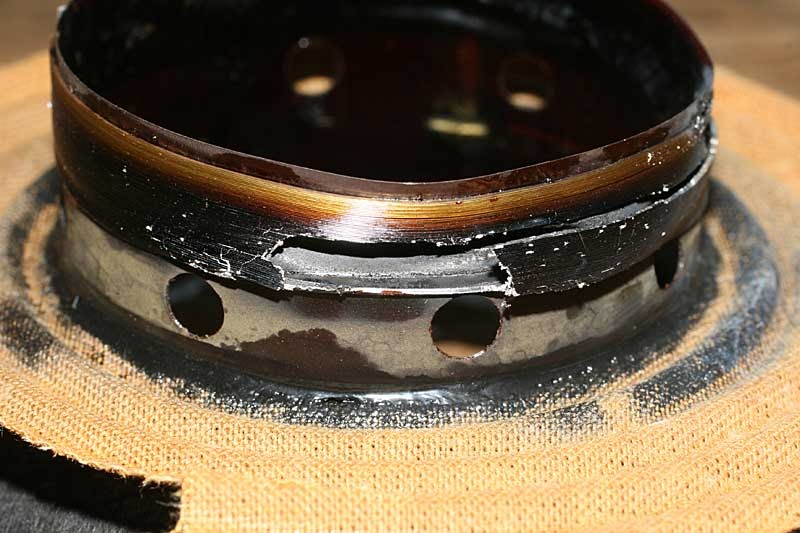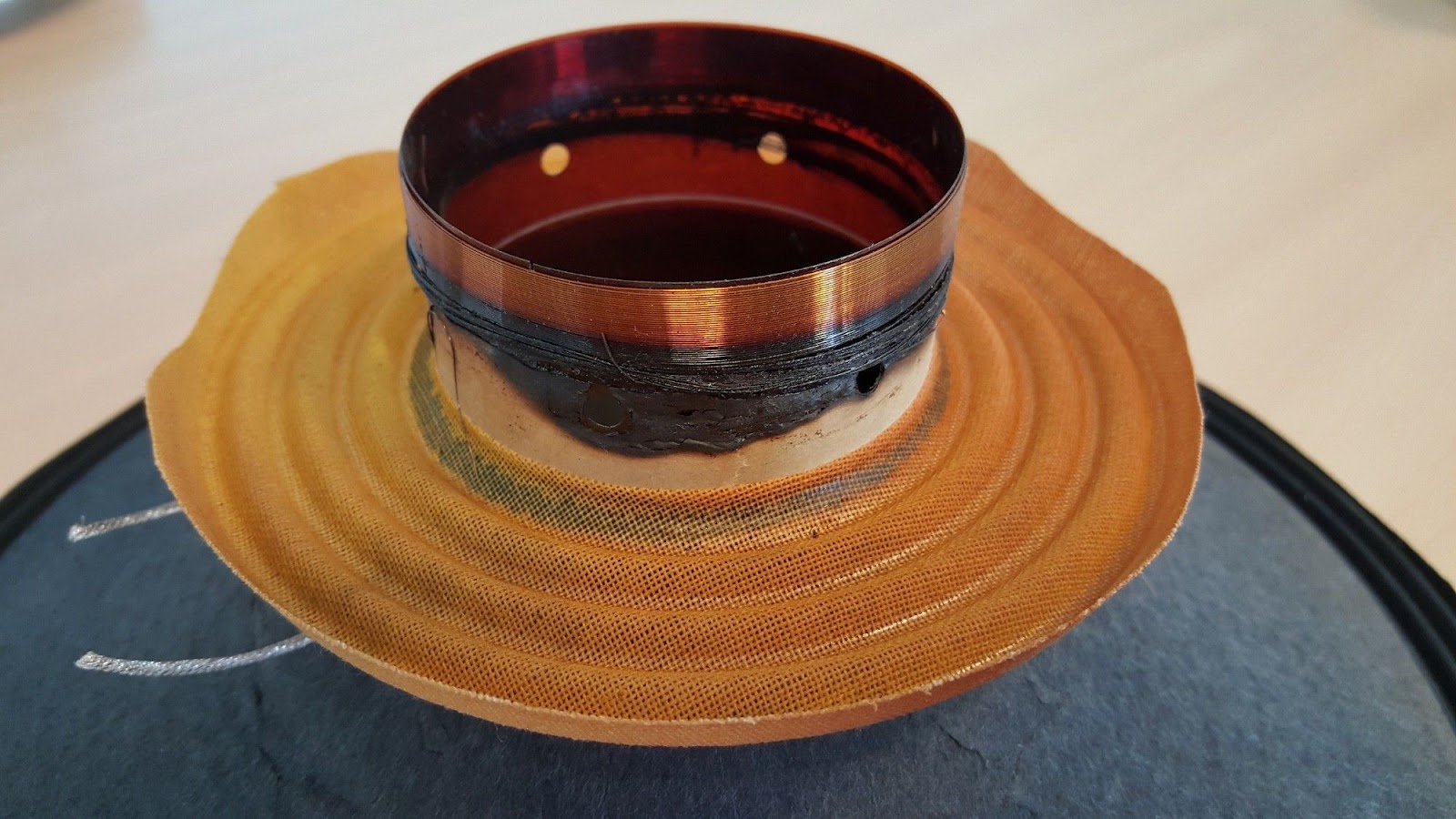Is my speaker blown? A question that is regularly asked. It's high time we delved in and explained this a bit more, what it actually means, and how to do some checks to determine if your speaker is indeed damaged.
WHAT DO WE MEAN BY 'BLOWN'?
A blown speaker is one that has become defective due to improper use. The term blown specifically relates to damage that's been caused by electrical damage which has then caused physical damage during use. Depending on the severity, this damage may or may not be visible, but will always be audible.
There are several possible causes for a speaker driver to blow, but in most cases, it’s because the amplifier volume has been turned up too high for a long time with speakers not designed for that level of use, or because your amplifier and speakers are not a good match electrically.
The latter can of course only be the case with passive speakers and a separate amplifier. Active speakers have a built-in amplifier, so they are correctly matched with regards to impedance and sensitivity.
WHAT CAUSES A SPEAKER TO BLOW?
Several reasons, depending on the condition of the speaker and how it's being powered.
First:
For a new speaker it will generally be the voice coil becoming overworked electrically, which causes it to heat up far beyond the level it's designed for. This excess heat will melt the coil's varnish coating causing it to deform and rub against the speaker magnet, which can be heard as a rubbing or scraping sound. The heat can also detach the voice coil from the flexible alignment material (the spider), which would result in no sound at all.
For either to happen to a healthy speaker means the signal it’s being given is not the smooth AC wave it needs to work properly. A distorted signal from too much signal gain or an overworked output stage will instead be sending a signal that is so clipped it has basically become a DC squarewave, causing the speaker coil to become overwhelmed quickly.
Second:
The second reason will be physical rather than electrical, and would come about from using an amplifier that's far too powerful for the speaker. The signal being fed from the amplifier can be perfect, so the speaker's voice coil is more than happy electrically speaking and will just keep accepting a larger voltage input as the volume is raised. Mechanically, however, the speaker cone, its rolled surround, and its suspension/spider are all just paper or polypropylene materials glued together, and they all have limits on the forces they can endure, and one of them will either rip or come unglued under the stress.
Third:
The last reason is condition-based, and either of the above failures can occur. A speaker is a delicate device, as mentioned they are often a mixture of paper and other absorbent materials. They can deteriorate through age, or more likely through poor storage. A damp garage, a baking hot shed etc, take your pick. The cones can become too moist or too dry, the varnishes can crack or shrink, the coil can develop rust, the magnet can lose its gauss.
You then push a load of electricity into it and expect it to produce amazing bass, so It does its best, and then goes pop.
HOW DO YOU PREVENT A BLOWN SPEAKER?
If you've searched for "blown speakers" and you're reading this blog, it's probably too late. Nevertheless, here's how you can prevent this from happening to you.
The reasons we just talked about will give you a good idea of why it’s likely to happen, so you can start with those and look at the obvious things first such as excessive amp volume on a speaker that's not designed for it, or an electrical mismatch between speakers and amplifier in a passive rig (check the impedance of the speaker and amp are suited), and that the amps output ratings (wattage per channel) are close to that of the speakers.
An amp can be a little bit overpowered and that's ok, but huge wattage mismatches between its output and the speaker driver's maximum capability and you will run into bother if careless with the volume.
Make sure your audio source is the best quality it can be, so no nasty MP3 files or YouTube audio, and never max out the volume on the source device if it's a laptop or phone. (60-75% is ideal). If using a mixer, ensure your signal isn't overgained (use the mixer VU meter as a guide), and always use good-quality cables between components.
In simple terms, if you hear distortion, turn the volume down as quickly as possible until the distortion is gone, then look at your gain and EQ settings to tame the signal, or change the source if it's poor quality. If the distortion remains and is audible even at a lower volume, then you are probably already too late and damage has already set in to your speaker.
HOW DO YOU RECOGNIZE A BLOWN SPEAKER?
If you have blown the speaker, you will often hear it immediately. The output will be distorted and muffled or even a loud crackling sound may occur depending on which part is damaged. It could also be the case that your speaker is blown if you won’t hear anything at all.
In really extreme cases it may even set itself on fire!, but thankfully that isn't too common.

WHAT CAN I DO TO REDUCE THE CHANCE?
As already discussed, you should ensure your music source is the best quality of signal possible, and that any gain or EQ adjustments made to it pre-amplification are done with knowledge and consideration.
With active speakers the speaker-to-amp matching is taken care of, so providing your speakers are working correctly, it's just signal levels and volumes you need to worry about.
For a passive PA or even Hi-Fi you must start with having the right combination of speakers and amplifier. As strange as it sounds, a low-powered amplifier can blow up your speakers just as well as one that's too powerful. A low-powered amp is more likely to clip its signal due to the output stage being driven too hard, which, though a slightly different type of distortion than a rubbish input signal gives, will melt your speaker's voice coil just as well.
Too much amp power and you risk speaker destruction through physical breakdown, so you don't want a mega-powerful amplifier either. You want speakers and amps to be matched fairly closely, with a little bit of spare in the amp so it can run more efficiently. We have a more in-depth article titled matching speakers and amplifiers which is well worth a read.
DEAL WITH DISTORTION QUICKLY!
Do you hear distortion? Has the music become muddy or gritty sounding? Always turn the volume down immediately! then investigate your signal chain and equipment condition to determine the possible cause.
Does your amp have signal clipping lights? These may light up very briefly to the beat of the bass (you should think more in the direction of a quarter of a second) but certainly not remain on for long. A second is already too long. The lighting up of the clip light indicates that the amplifier is already sending a disturbed signal to the speaker(s) at that moment. Again it’s time to at the very least turn the volume down to evaluate your signal chain and level settings.
HOW DO YOU CHECK IF THE SPEAKER IS BLOWN?
Important (if in warranty) is that you should first contact the company where you bought the speaker(s) before picking up any tools. If that is no longer an option then the following steps may just help to instead draw a conclusion:
Before you start:
- Active speakers: Disconnect the speaker from the mains (unplug the device).
- Passive speakers: Disconnect the speaker from the amplifier.
- Lay the speaker on its back.
- Remove the grill in front of the woofer (this process will differ slightly depending on the speaker type).
- Spread your fingers over the woofer as shown in the images below.
- Very gently press the woofer about an inch and then release.

If you hear a scraping or scratching sound: this normally indicates the voice coil is rubbing against the magnet due to it having melted out of shape, and tells you your speaker is indeed blown.
The woofer should move without actually applying force. If it’s reluctant to move or is completely stuck then this indicates voice coil and spider damage and the speaker is most likely dead.
You can also check the coil by using an electrical meter across the speaker terminals, as a broken coil will read as open circuit.
For tweeters, anything other than the meter test isn't possible due to their size and design, but it’s generally very obvious if a tweeter has failed or is damaged just by the sound it's producing.

CAN A BLOWN SPEAKER BE REPAIRED?
Well, yes and no. If you've blown up your speaker, by far the easiest and most cost-efficient solution is to completely replace the damaged woofer or tweeter. Most manufacturers offer replacements, and even if not, a suitable replacement with similar specifications will be available from a specialist.
It is possible to repair a blown speaker, and this is a process called re-coning. It’s generally only viable for higher-value woofers or those found in instrument speaker cabinets, as you would be replacing the voice coil, the spider, the cone, dust cap, etc, basically a complete rebuild. As such, the parts would need to come from the manufacturer to be suitable, and it's quite a tricky job to do.
WHAT ABOUT WARRANTY?
Unfortunately, blowing up a speaker is never covered by the warranty, and this is because the damage is classed as improper use of the speaker. The costs of any repair or replacement of a blown speaker are therefore always at your own expense, regardless of how long you have owned it.
Warranties cover component failure but not damage through incorrect usage, and it's easy for a retailer to check for damage once a speaker is returned, so always be upfront about what’s happened as it saves awkward conversations later on.



